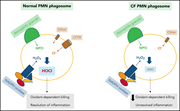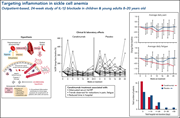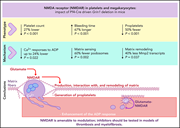Issue Archive
Table of Contents
BLOOD COMMENTARIES
PLENARY PAPER
Defects in mucosal immunity and nasopharyngeal dysbiosis in HSC-transplanted SCID patients with IL2RG/JAK3 deficiency
Severe combined immunodeficiency (SCID) is a heterogeneous disease, but all subsets are treated with hematopoietic stem cell therapy (HSCT). In this Plenary paper, Goncalves et al investigate subtle heterogeneity of immune reconstitution, especially in patients with genetic defects in IL2R- γ or JAK3. This latter group of patients often receive nonmyeloablative HSCT, and despite that immune reconstitution evinces a local nasopharyngeal defect in type 2 cytokine production leading to mucosal IgA deficiency and microbial dysbiosis, the defect improved with immunoglobulin replacement therapy.
SPECIAL REPORT
International expert consensus recommendations for the diagnosis and treatment of Langerhans cell histiocytosis in adults
In this Special Report, Goyal et al discuss consensus recommendations for the diagnostic and therapeutic approach to adult Langerhans cell histiocytosis in the context of newer molecular observations elucidating pathogenesis of this hematopoietic neoplasm. This report focuses on clinical diagnosis, treatment algorithms, and response assessment of this highly heterogeneous disease.
REVIEW ARTICLE
Neutrophil dysfunction in the pathogenesis of cystic fibrosis
Nauseef and Wang review the role of neutrophil dysfunction in increased infection and dysregulated inflammation in cystic fibrosis. Defective chloride transport impairs the generation of hypochlorous acid, a powerful antimicrobial antioxidant produced by the reaction of oxidants with myeloperoxidase in the presence of chloride ion.
HOW I TREAT
How I manage pregnancy in women with Glanzmann thrombasthenia
Glanzmann thrombasthenia is a rare inherited disorder caused by defects in the αIIbβ3 integrin that leads to profound platelet aggregation abnormalities. Platelet transfusions are used to treat bleeding risk formation of anti-αIIbβ3 antibodies. Using two illustrative cases followed from prepregnancy through delivery, Fiore and colleagues describe the appropriate management and therapeutic approach to pregnancy in this very high-risk patient population.
CLINICAL TRIALS AND OBSERVATIONS
A randomized, placebo-controlled, double-blind trial of canakinumab in children and young adults with sickle cell anemia
Clinical Trials & Observations
The role of inflammation in the pathogenesis of complications of sickle cell anemia (SCA) is increasingly recognized. Rees and colleagues present results of a randomized double-blind trial of the IL-1b inhibitor canakinumab versus placebo for the control of SCA-related outcomes. Although the trial did not achieve the primary objective of prespecified reduction in pain, patients receiving canakinumab have a decrease in markers of inflammation, SCA-related adverse events, hospitalizations, and a trend toward improvement in pain, suggesting therapeutic benefits.
HEMATOPOIESIS AND STEM CELLS
Age-dependent effects of Igf2bp2 on gene regulation, function, and aging of hematopoietic stem cells in mice
Aging is associated with impaired hematopoietic stem and progenitor cell (HSPC) function, leading to decreased growth and repopulation capacity and myeloid skewing. Suo et al investigated the role of Igf2bp2, an RNA-binding protein highly expressed in young but not old mice, in the aging HSPC phenotype. Deletion of Igf2bp2 in young mice phenocopies the aging phenotype, suggesting an important role in the age-related changes in HSPCs.
LYMPHOID NEOPLASIA
Primary plasma cell leukemias displaying t(11;14) have specific genomic, transcriptional, and clinical features
Brief Report
PLATELETS AND THROMBOPOIESIS
THROMBOSIS AND HEMOSTASIS
Targeting platelet-derived CXCL12 impedes arterial thrombosis
TRANSPLANTATION
Donor-derived multiple leukemia antigen–specific T-cell therapy to prevent relapse after transplant in patients with ALL
Clinical Trials & Observations
Brief Report
Hematopoietic stem cell transplant (HSCT) is recommended for patients with high-risk acute lymphoblastic leukemia (ALL), but relapses are common. Naik et al report promising preliminary results with post-HSCT infusion of donor-derived multiple leukemia-antigen specific T cells into 11 patients. Six of 8 evaluable patients had increased tumor-specific T-cell expansion after infusion and continue in remission; in two others, amplification did not occur, and they have relapsed. Although very preliminary, the data suggest that this may be a promising strategy to prevent post-HSCT relapse of ALL.
LETTERS TO BLOOD
Autoantibodies against type I IFNs in patients with Ph-negative myeloproliferative neoplasms
Cerebral venous thrombosis due to vaccine-induced immune thrombotic thrombocytopenia after a second ChAdOx1 nCoV-19 dose
Clinical Trials & Observations
Vaccine-induced immune thrombotic thrombocytopenia (VITT), a rare but life-threatening complication of adenoviral vaccination against COVID-19, has been reported almost entirely following the first dose. Krzywicka and colleagues report on 124 patients with VITT in a multinational registry diagnosed after dose 2; no specific events were observed after dose 1. These patients had early presentation, and two of the patients died.
BLOOD WORK
ERRATUM
-
Cover Image
Cover Image
![issue cover]()
A normal mouse megakaryocyte cultured on a collagen-coated surface rearranges its cytoskeleton upon contact with matrix (α-tubulin is in green and F-actin in red). The N-methyl-
D -aspartate receptor (NMDAR) assists this process, leading to increased proplatelet formation. See the article by Hearn et al on page 2673. - PDF Icon Front MatterFront Matter
- PDF Icon Table of ContentsTable of Contents
- PDF Icon Back MatterBack Matter
- PDF Icon Editorial BoardEditorial Board
Advertisement intended for health care professionals
Email alerts
Advertisement intended for health care professionals












Seek and you shall find: immune lymphoid cells in holobiont health